WHAT I FOUND TODAY ON THE MEADOW
I came back home an hour ago, after spending an hour or two on one of the meadows in between my hometown and the nearest village.
In this post, you'll see a small collection of insects, spiders, and plants that I photographed there. There is no other thematic thread between them, besides being photographed today in the meadow.
In this opening photograph, you can see a small moth from the Geometridae family. I'm not sure about the exact species. I'll say that the genus is probably Idaea, and the species may be the Idaea serpentata.
After taking this shot the moth flew away ...
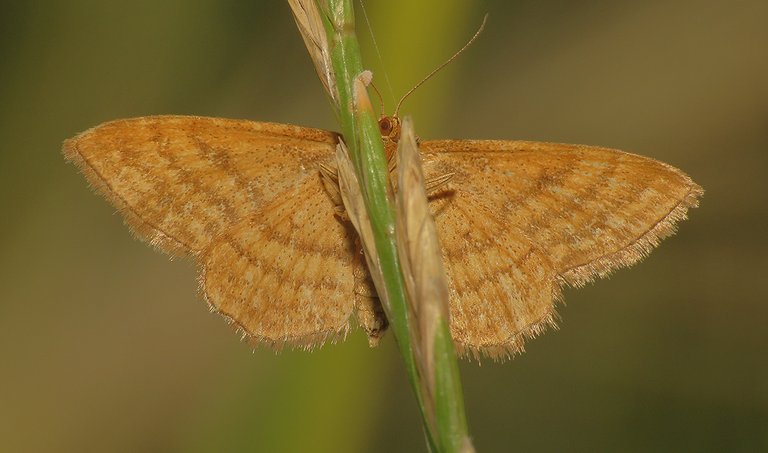
... and soon landed on another grass where I could take this photograph in which you can take a look at the lower surface of the wings.
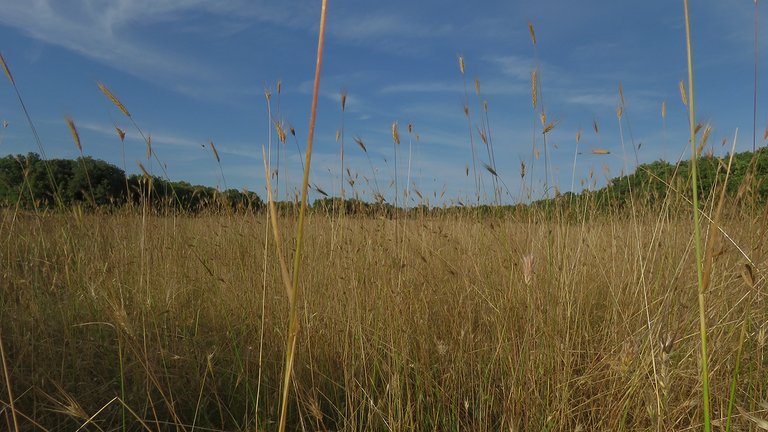
In this wide shot, you can take a good look at the entire meadow.

Here you can see a crab spider ...
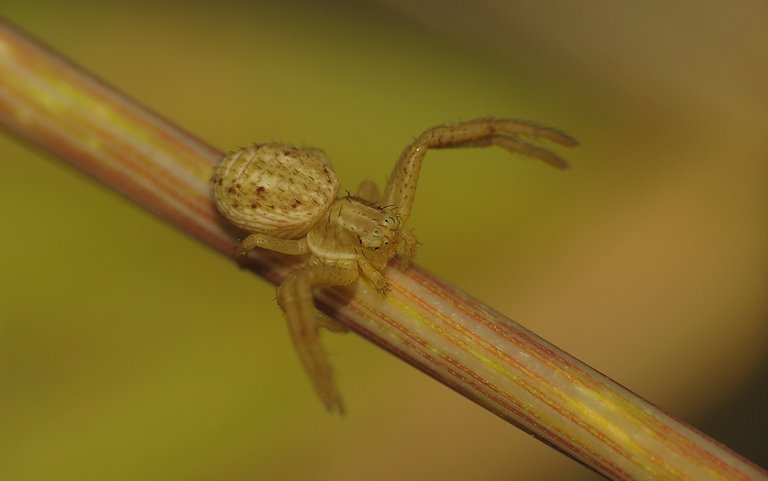
... a very small, juvenile Xysticus. I mean, the genus is xysticus while the exact species is hard to tell with quite a few similar-looking xysticus present in the area.
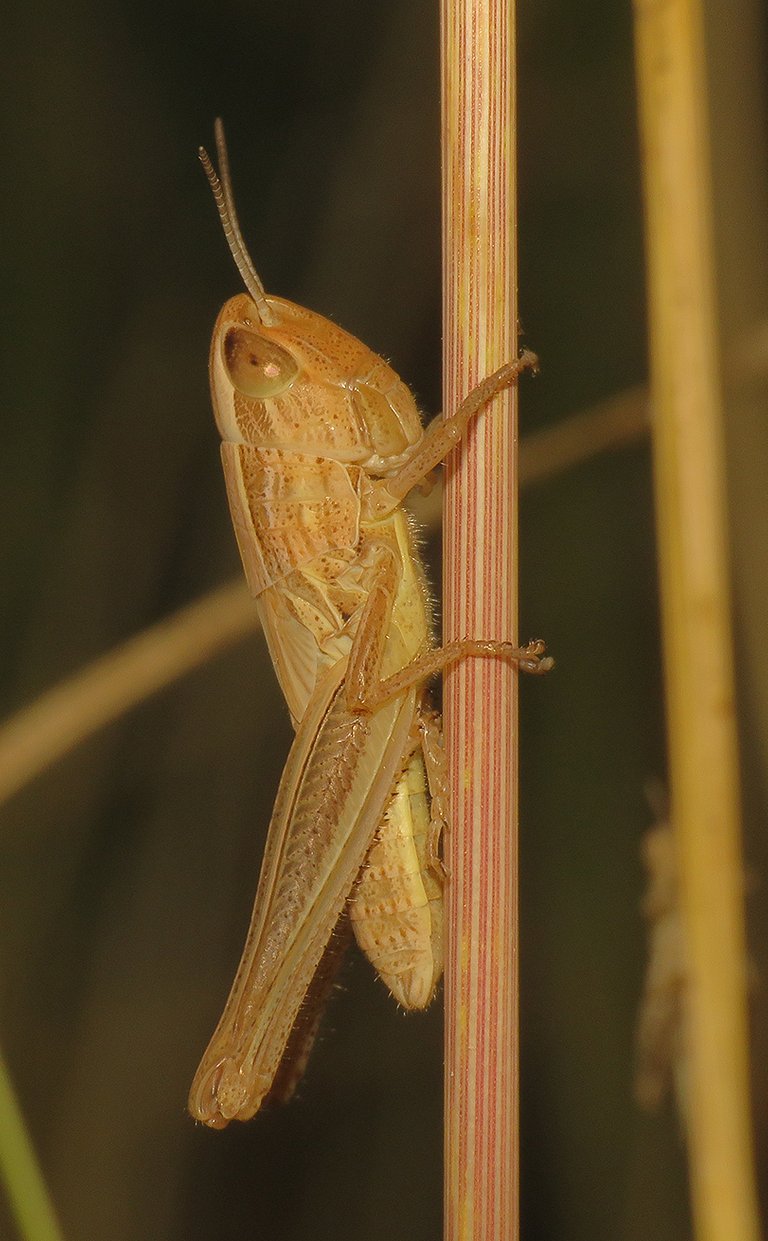
This is the nymph of the Euchorthippus declivus grasshopper.
Here you can see another moth. The Chrysocrambus linetella. A species from the Crambidae family.

This lovely little flower that, from a certain angle, looks a bit like the head of some dinosaur, is part of a plant that I found on the edge of the meadow.
In the shade under the oak trees that grow around the sunny open space.
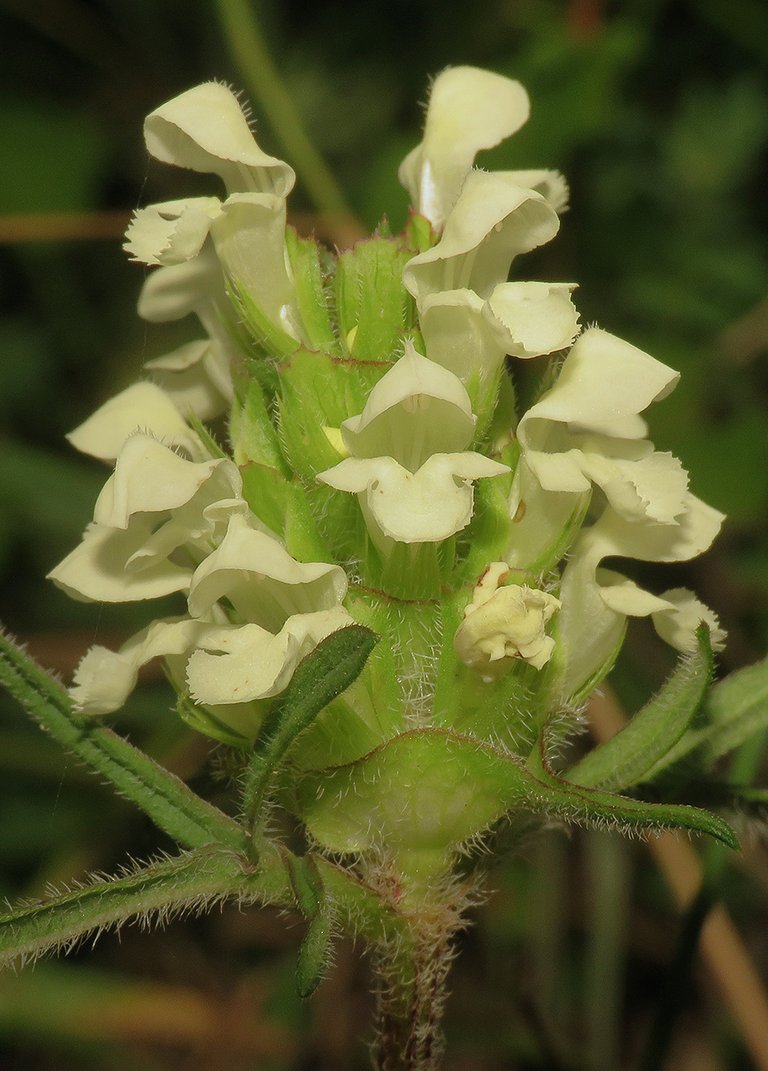
The name of the plant is Prunella laciniata.
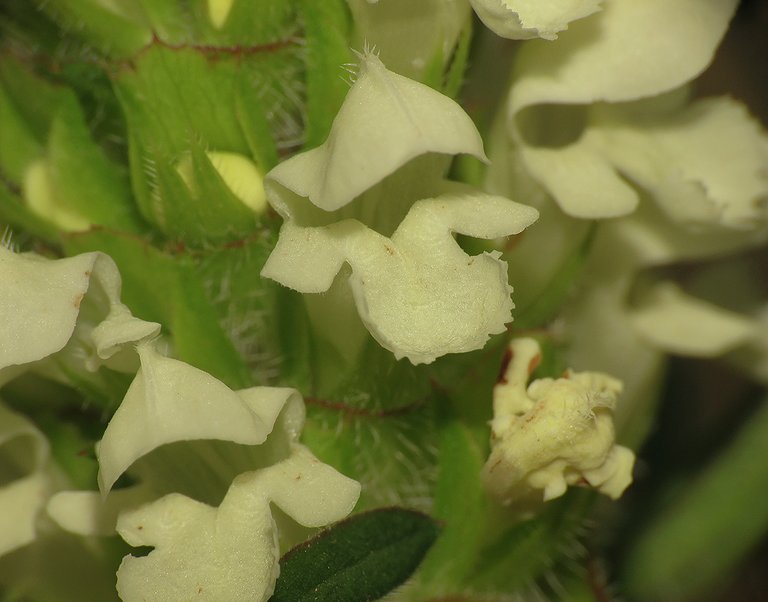
The meadows are pretty dry these days. Shades of browns are the prevalent colors, so these juicy flowers were a welcome refreshment from the general atmosphere.

Lynx spiders can be usually seen resting, hunting, or eating the prey on the stems or leaves of grass, on flowers, and on all kinds of vegetation. But this one looked like floating in the air in between two stems of grass.
Since lynx spiders don't use webs to hunt, I suppose that this construction must have something to do with reproduction.
Oxyopes lineatus is the name of this Oxyopidae species.
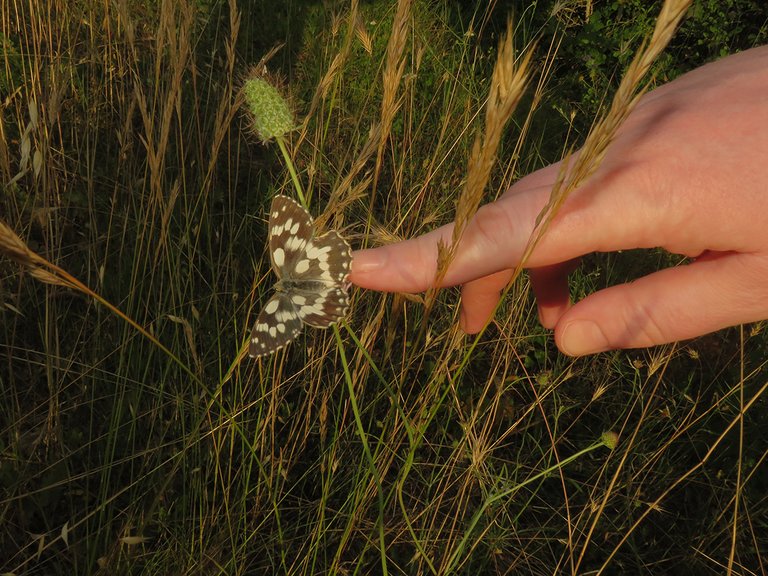
A friend was also there with me. Here you can see her hand and the Melanargia galathea butterfly.
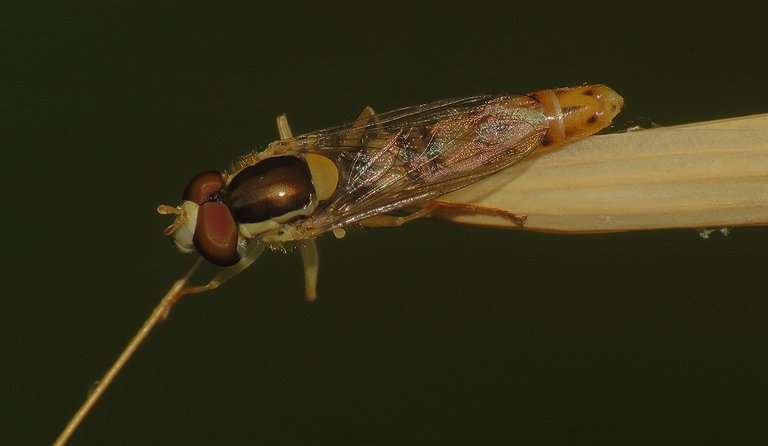
This is the Sphaerophoria scripta. A fly from the Syrphidae family. Nicely camouflaged on the top of the grass.
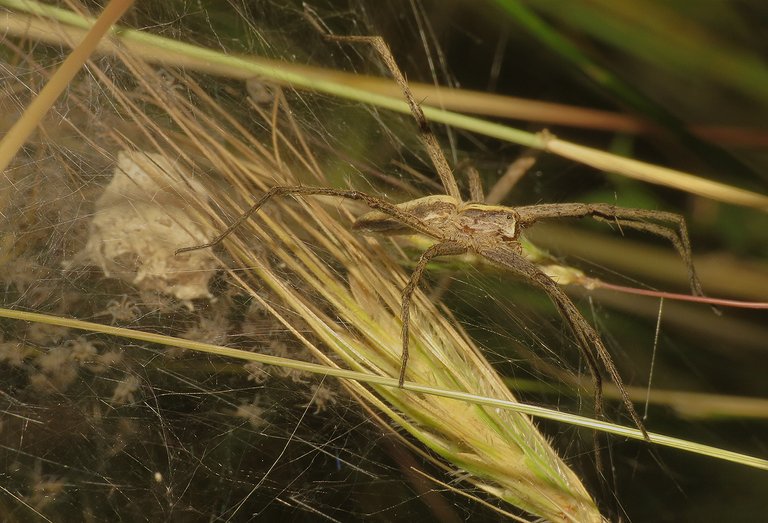
Here you can see another spider. Pisaura mirabilis. The female is guarding the nest with a bunch of young spiderlings in it.
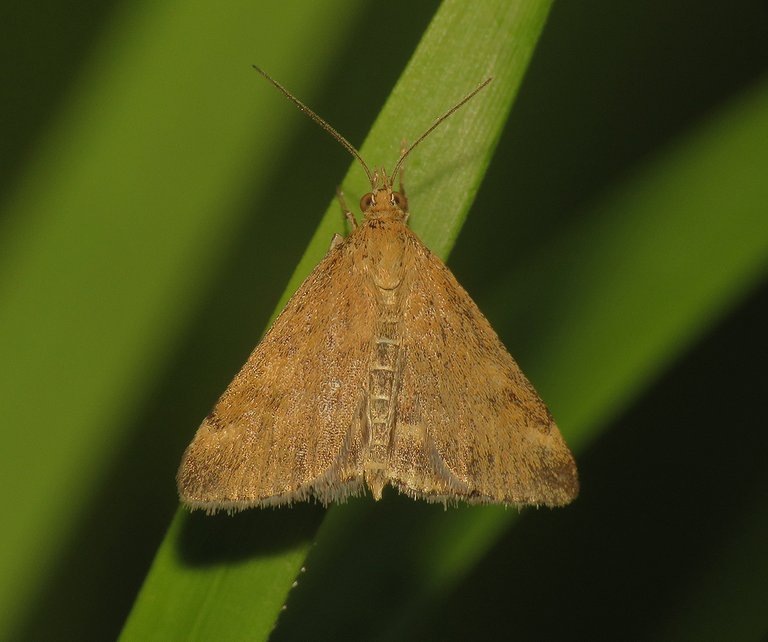
This is the Pyrausta despicata, another moth from the Crambidae family.
Here you can see another flower, for a change. The Knautia arvensis. And a longhorn bee on that flower.

With this Anisoplia agricola beetle, the post is almost over.
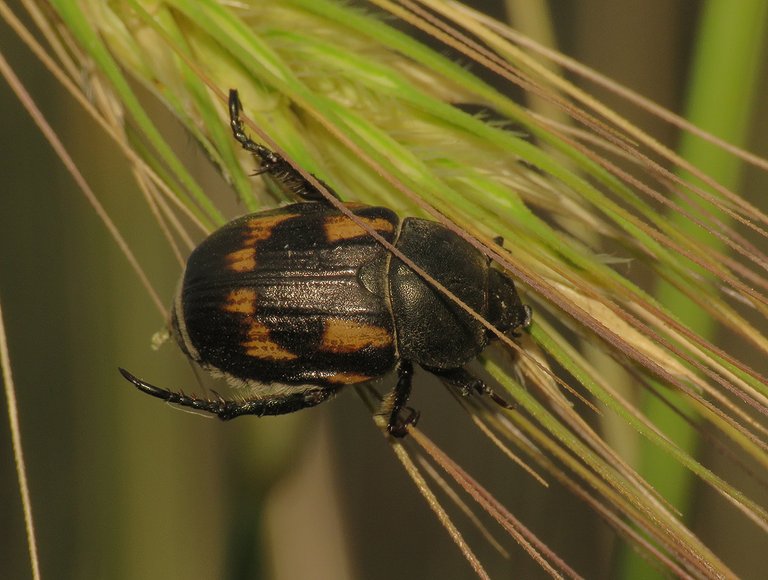
Here you can see another beetle of the same species. As you, maybe, already noticed, the markings on the elytra can be slightly different from individual to individual. And now, with this second Anisoplia agricola, the post is definitively over.
Before the usual disclaimer that states that the photographs are my work, I'll give you some links to the sites I use to identify the species and to get bits of information that I didn't know before.
https://www.leps.it/ This is a great site that can help you identify moths and butterflies if you are in Europe or North Africa.
https://identify.plantnet.org/ This app can help with plants.
https://www.kerbtier.de/cgi-bin/enFOverview.cgi The focus of this site is on the beetles of Germany. Many species can be found in my more southern area as well. If I can't find the species, I can more often than not, at least find the family and genus. And then continue the search through the labyrinths of the Internet.
https://www.plantea.com.hr/zuckasta-celinscica/ This is about the Prunella laciniata. It's written in Croatian, for a change.
AND THAT'S IT. AS ALWAYS IN THESE POSTS ON HIVE, THE PHOTOGRAPHS ARE MY WORK - THE END.
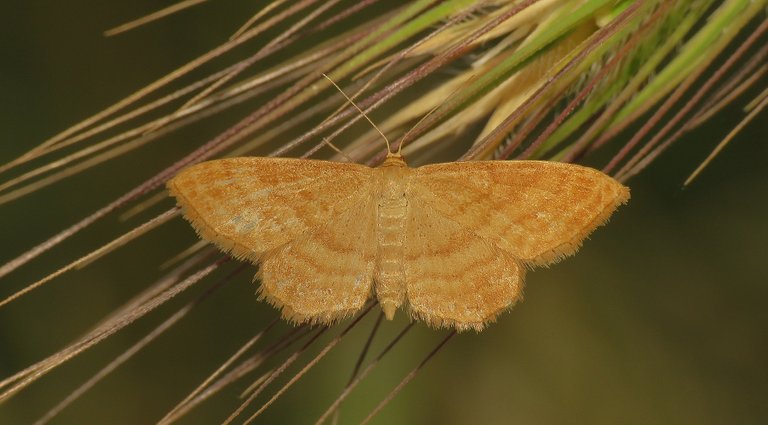
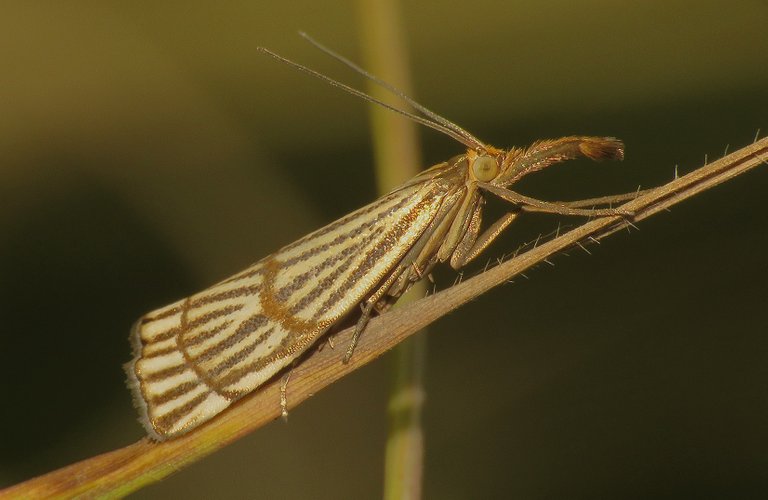
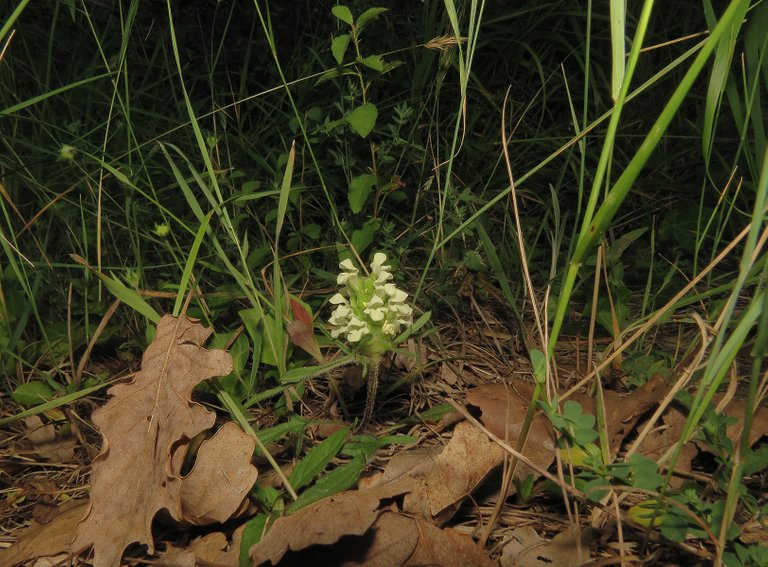
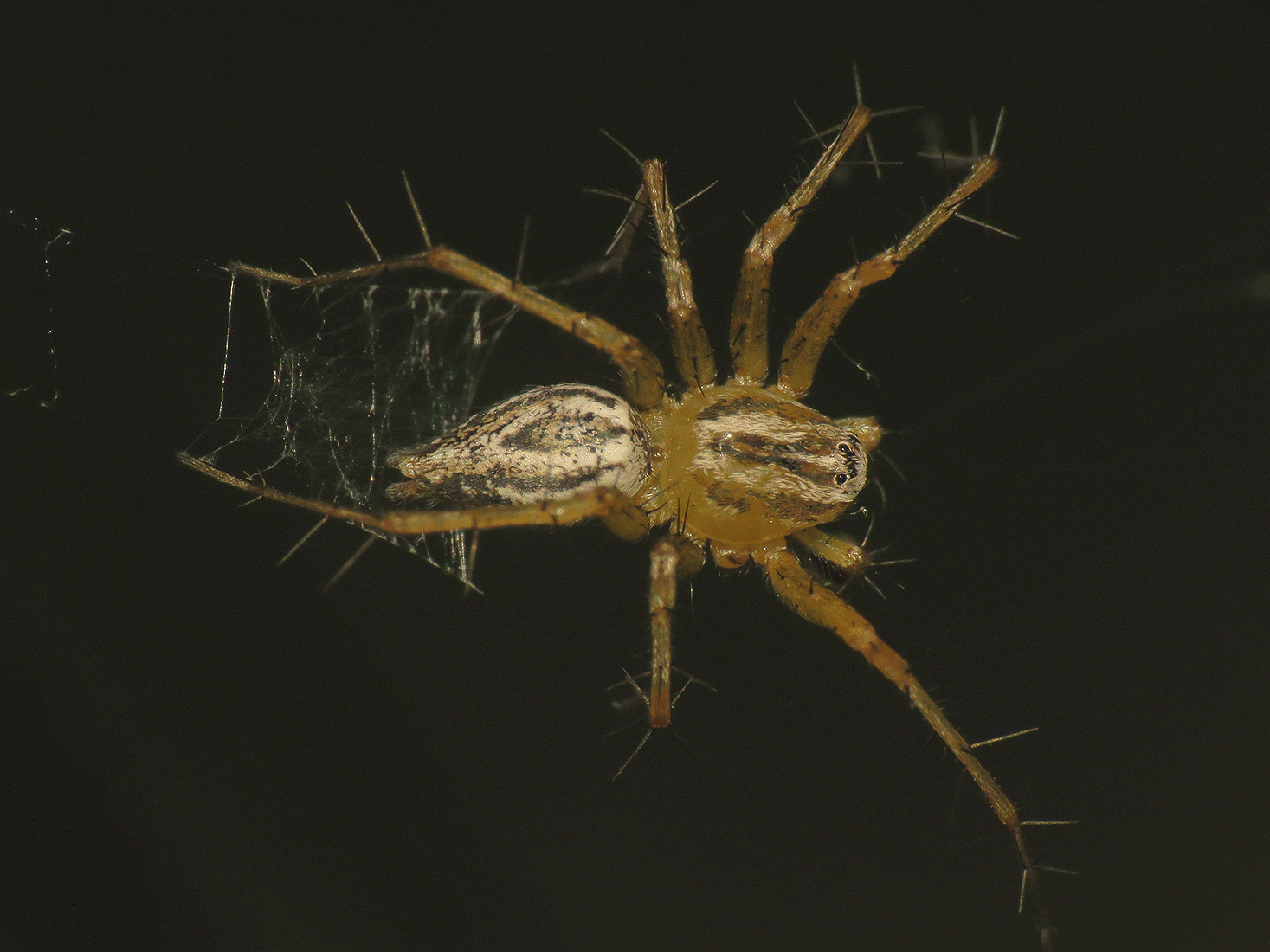


Beautiful pictures 😍 you spent quality time today
Thanks.🙂Glad you like the post. Yes, I definitively had fun taking the photographs. The spring and summer provide plenty of stuff to photograph through the macro lens. The first half of autumn is also petty good.
yeah you are right about that.. I had macro hunting today to. but its for tomorrows post
I'll definitively take a look tomorrow. 🙂You have plenty of great photographs here on HIVE.
thanks. I'm trying. I'm glad you like them..
Wow
These are amazing shots 💕
You found some wonderful insect and flower. Those are really amazing
Thanks for your contribution to the STEMsocial community. Feel free to join us on discord to get to know the rest of us!
Please consider delegating to the @stemsocial account (85% of the curation rewards are returned).
You may also include @stemsocial as a beneficiary of the rewards of this post to get a stronger support.
Congratulations @borjan! You have completed the following achievement on the Hive blockchain and have been rewarded with new badge(s):
Your next target is to reach 240000 upvotes.
You can view your badges on your board and compare yourself to others in the Ranking
If you no longer want to receive notifications, reply to this comment with the word
STOPLovely blue sky over the meadow. So many strange looking insects are still searching for food! You have interesting spiders. We could hardly see any spiders these days, I wonder if the small grey lizards ate them all up! They go hunting during the night swallow many night insects and moths.
Too many rainy days here so we have more mosquitoes!
Prunella laciniata flowers are so beautiful I have never seen a flower like this and the picture you shared is not broken can be enjoyed well thank you
Such a beautiful walk through the meadow, showing us things we otherwise would never see ... thank you!
I like the yellow color of butterflies, especially since they are the same color as the field. The shape of scorpion is very scary, does it release strings?
I love green plants, especially if they are wet. The weather is generally dry, but the nature is still beautiful. I don't like locusts, they scare me.
Macro Photography that you share is very special for my friend to see
Lovely outdoor macro shots! The nature comes in so many different form and colours! Nice work, @borjan.
That bee looks quite cute, thanks for sharing.
!PGM
!LOLZ
!LUV
!MEME
BUY AND STAKE THE PGM TO SEND A LOT OF TOKENS!
The tokens that the command sends are: 0.1 PGM-0.1 LVL-2.5 BUDS-0.01 MOTA-0.05 DEC-15 SBT-1 STARBITS-[0.00000001 BTC (SWAP.BTC) only if you have 2500 PGM in stake or more ]
5000 PGM IN STAKE = 2x rewards!
Discord
Support the curation account @ pgm-curator with a delegation 10 HP - 50 HP - 100 HP - 500 HP - 1000 HP
Get potential votes from @ pgm-curator by paying in PGM, here is a guide
I'm a bot, if you want a hand ask @ zottone444
BUY AND STAKE THE PGM TO SEND A LOT OF TOKENS!
The tokens that the command sends are: 0.1 PGM-0.1 LVL-2.5 BUDS-0.01 MOTA-0.05 DEC-15 SBT-1 STARBITS-[0.00000001 BTC (SWAP.BTC) only if you have 2500 PGM in stake or more ]
5000 PGM IN STAKE = 2x rewards!
Discord
Support the curation account @ pgm-curator with a delegation 10 HP - 50 HP - 100 HP - 500 HP - 1000 HP
Get potential votes from @ pgm-curator by paying in PGM, here is a guide
I'm a bot, if you want a hand ask @ zottone444
Credit: cmmemes
Earn Crypto for your Memes @ hiveme.me!
@brianhuang(9/10) gave you LUV. H-E tools | my wallet | discord | community | <><
H-E tools | my wallet | discord | community | <><
HiveBuzz.me NFT for Peace
lolztoken.com
Just follow the fresh prints.
Credit: reddit
@borjan, I sent you an $LOLZ on behalf of @brianhuang
Use the !LOL or !LOLZ command to share a joke and an $LOLZ
(9/10)
Love the detail on the leg of the nymph of the Euchorthippus declivus grasshopper.